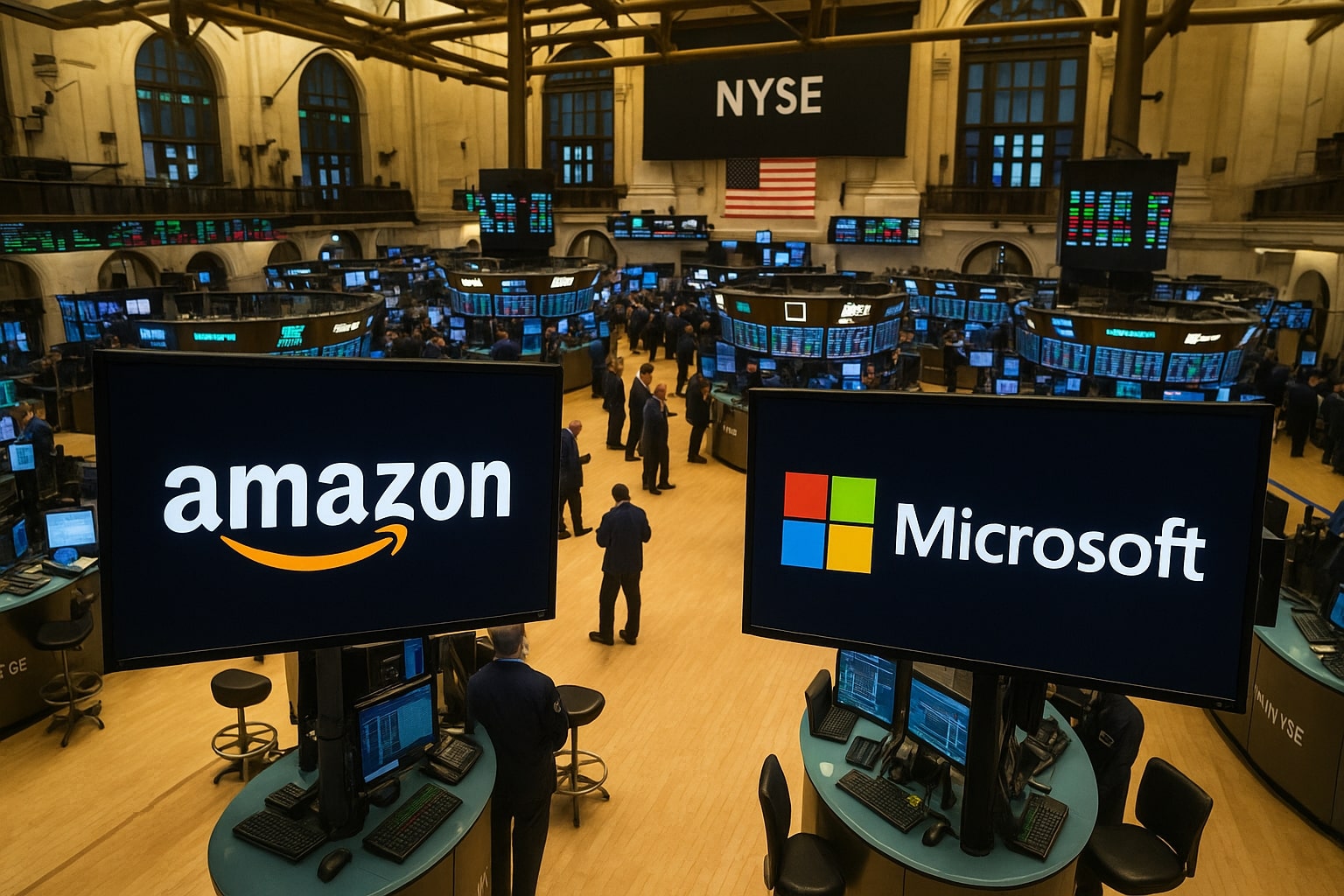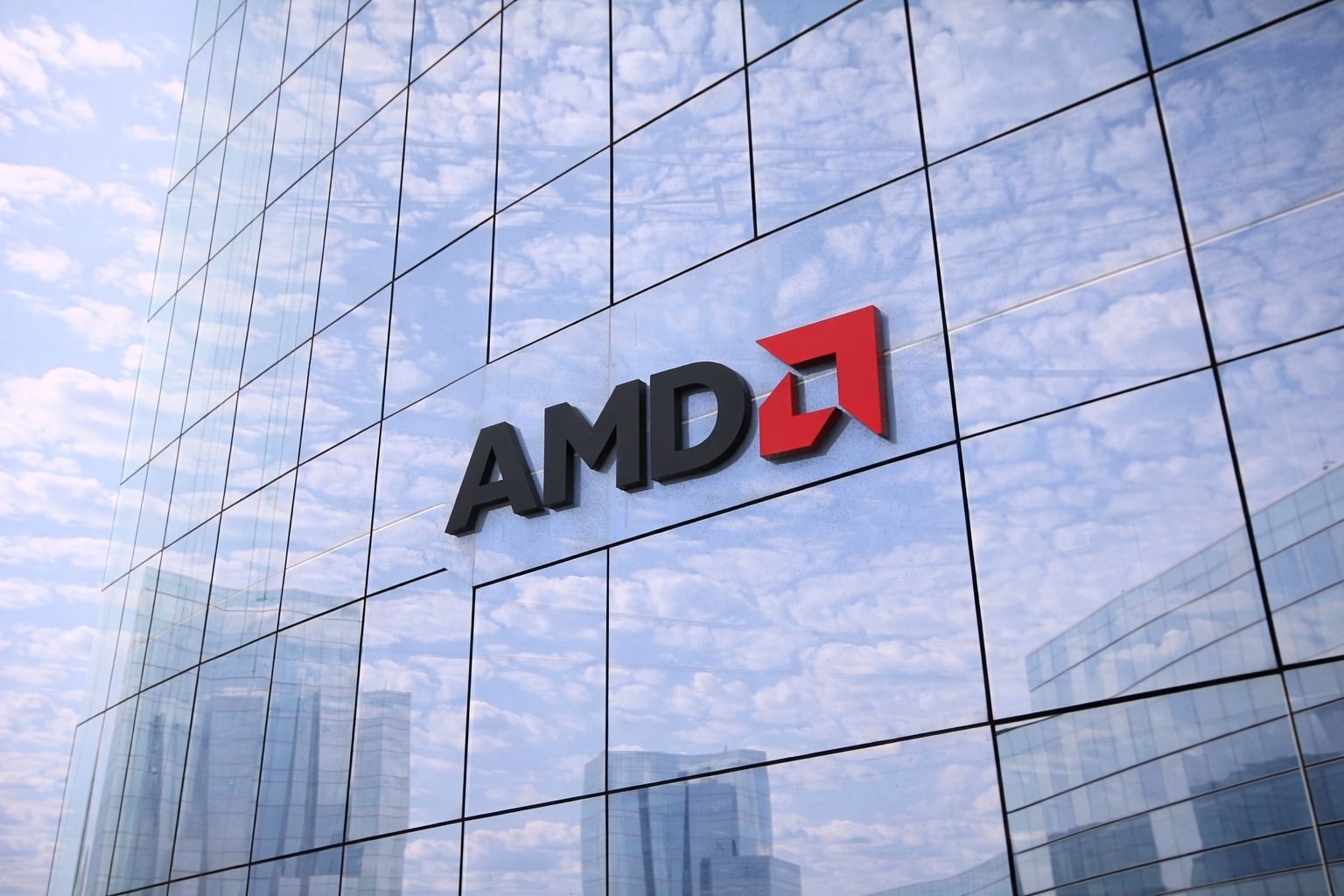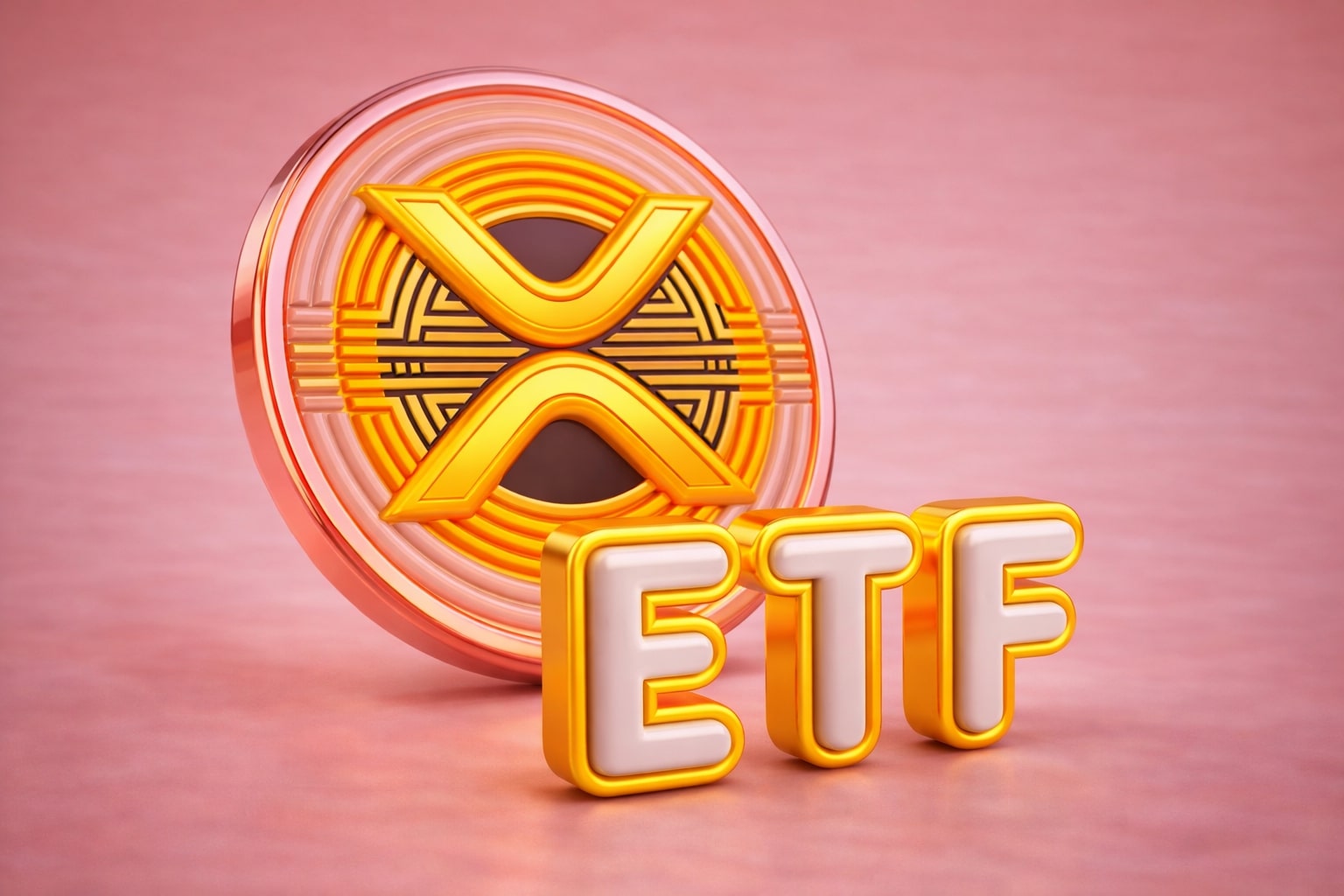
Microsoft MSFT Stock vs Amazon AMZN Stock: AI, Cloud, and Growth Divide
MSFT stock at $500 eyes $615–$700 targets, while AMZN at $231 faces $240 resistance but analysts project $263–$305 upside | That's TradingNEWS
Microsoft (NASDAQ:MSFT) vs. Amazon (NASDAQ:AMZN) — AI, Cloud, and Growth Clash
NASDAQ:MSFT Anchored at $500 With $3.72 Trillion Market Cap
Microsoft trades at $500.02, slipping slightly in the latest session but still holding a 19% gain over the past year. Its market capitalization has reached $3.72 trillion, making it the second-most valuable company in the world. Financials remain robust, with $281.7 billion in trailing revenue and net income of $101.8 billion, translating to a margin of 36.1%. EPS stands at $13.66, with forecasts for $15.52 in FY2026 and $18.20 in FY2027, showing double-digit growth expectations. Microsoft’s free cash flow generation remains unmatched, with $61 billion in FCF despite record AI capex. The stock trades at 36.6x trailing earnings and 32.3x forward earnings, premium multiples but consistent with its growth rate. Analysts have raised price targets, ranging from $615 to $700, projecting 20–25% upside from current levels.
NASDAQ:AMZN Trading at $231 With $2.46 Trillion Market Cap
Amazon trades at $231.20, with a 0.37% intraday rise, putting it less than $10 below its 52-week high of $242.52. Market capitalization stands at $2.46 trillion, with trailing revenue of $670.0 billion and net income of $70.6 billion, reflecting a margin of 10.5%, significantly lower than Microsoft’s. EPS is $6.56, with forward P/E at 29.6x, indicating investors are willing to pay for growth but at a discount to Microsoft’s AI premium. Quarterly revenue growth is 13.3% year-on-year, outpacing most retail peers, and AWS continues to be the profit center. Amazon delivered $121.1 billion in operating cash flow and $31 billion in free cash flow last year, a solid recovery after years of thin margins. Analysts have set a consensus target of $263, with bullish cases as high as $305, suggesting 15–30% upside from current prices.
Cloud Wars: Azure’s 33% Growth vs. AWS Cash Engine
Azure grew 33% year-on-year in Q2, outpacing both Amazon Web Services and Google Cloud. Microsoft reported a $13 billion AI run-rate business, expected to surpass $50 billion by 2027, with Azure maintaining 30%+ growth for seven consecutive quarters. Amazon’s AWS remains the cash cow, underpinning $31 billion in FCF, but growth has decelerated relative to Azure. AWS margins remain higher than Amazon’s retail business but face intensifying competition. Microsoft’s strategy is not just about cloud services but also locking in capacity, demonstrated by the $19.4 billion Nebius deal, guaranteeing AI GPU availability through 2031. This provides Microsoft predictability that AWS does not yet match, though Amazon benefits from scale and breadth across retail, Prime, and logistics.
AI Ecosystems and Strategic Positioning
Microsoft’s edge comes from building in-house models like MAI-1 preview, reducing reliance on OpenAI, while embedding AI across Office, Teams, and Azure. By contrast, Amazon is leveraging AI mainly through AWS, retail search, and advertising, while also scaling physical applications like Zoox’s robotaxi fleet. Microsoft’s nuclear energy partnership at Three Mile Island secures 837 MW of dedicated power, a long-term hedge against energy volatility for AI expansion. Amazon’s big bets lie in groceries, with analysts estimating a $600 billion market opportunity by 2026. Both companies are positioned for multi-decade optionality, but Microsoft is clearly more advanced in monetizing AI at enterprise scale, while Amazon remains diversified across retail, logistics, cloud, and autonomous systems.
Profitability, Margins, and Balance Sheet Strength
Microsoft’s margins dwarf Amazon’s. With 36% net income margin and 33% return on equity, Microsoft consistently converts revenue into profits. Amazon’s 10% net margin reflects retail’s lower profitability, though AWS offsets this. Microsoft carries $94.5 billion in cash against $112.1 billion debt, while Amazon holds $93.2 billion in cash versus $159.6 billion debt, making Microsoft structurally stronger on leverage. Both companies return capital to shareholders, but Microsoft maintains a 0.66% dividend yield ($3.32 annual payout), while Amazon reinvests cash flow heavily into logistics, AI, and infrastructure.
Valuation and Analyst Outlook
At current levels, Microsoft’s valuation is more expensive — 32.3x forward earnings vs. Amazon’s 29.6x — but justified by higher margins and superior profitability. Amazon, with its lower multiple and diversified expansion into Zoox and groceries, carries greater optionality but also more execution risk. Analysts remain bullish on both: Microsoft with a base target of $615 and upside to $700, Amazon with consensus at $263 and highs at $305. The market effectively assigns Microsoft a premium for its proven AI monetization, while Amazon trades as a growth compounder balancing multiple verticals.
Read More
-
SPYD ETF Price at $43.57: Is This High-Dividend S&P 500 Fund Still Cheap for 2026?
30.12.2025 · TradingNEWS ArchiveStocks
-
XRP ETF Inflows Ignite: XRPI at $10.79 and XRPR at $15.43 While XRP-USD Holds the $1.80 Floor
30.12.2025 · TradingNEWS ArchiveCrypto
-
Natural Gas Price Forecast $4: Storage Slides, UNG Climbs and NG=F Targets $5.50
30.12.2025 · TradingNEWS ArchiveCommodities
-
USD/JPY Price Forecast: 158 Ceiling and 154.50 Support Define the 2026 Battle
30.12.2025 · TradingNEWS ArchiveForex
Technical Landscape: MSFT vs. AMZN
Microsoft trades just under resistance at $503–$520, with support at $481 (100-day EMA) and deeper support at $456 (200-day EMA). A break above $520 would open a path to retesting all-time highs near $555. Amazon faces immediate resistance at $240, where it has rejected three times in 2025. Support sits at $229, and a breakdown would expose $210, while a breakout could accelerate shares toward $262–$280. Both stocks trade near key technical battlegrounds, with Microsoft closer to blue-sky breakout territory, while Amazon remains rangebound below $240.
Verdict: NASDAQ:MSFT vs. NASDAQ:AMZN
Between Microsoft and Amazon, NASDAQ:MSFT is the stronger Buy at current levels due to superior margins, more predictable AI infrastructure commitments, and Azure’s faster growth trajectory. Its nuclear energy hedge and Nebius deal ensure scalability in AI that no competitor currently matches. Analysts’ $615–$700 targets are realistic, providing 20–25% upside. NASDAQ:AMZN also remains a Buy, but with caveats — the breakout above $240 must materialize for momentum to continue. Its optionality in Zoox and groceries supports long-term growth, but near-term margins and insider sales weigh on sentiment. Price targets of $263–$305 still offer 15–30% upside, but execution risk is higher. For investors, Microsoft provides defensive, cash-rich AI exposure, while Amazon offers diversified growth with higher volatility.
View Microsoft Real-Time Chart | View Amazon Real-Time Chart


















